The primary trick to plotting the cell phone data is getting latitude and longitude coordinates for the two cell towers. Verizon provided one, and I looked up the second using a postal address geocoder and the US Census TIGER/LINE data for Santa Fe County. The Census data is notoriously bad, but gives a reasonable guess at the location of 222 East Marcy Avenue as 35.688295N by 105.934948W. [A few days later I learned of a web site (www.towersource.com), that allows lookups of tower sites, and confirms the coordinates to within a few ten-thousandths of a degree.]
The graphic below shows the data from 222 East Marcy, plotted as an approximate circular arc of radius 8.8 miles, but smeared to assume a +/- 0.2 mile uncertainty in the measurement (just a number obtained through rectal extraction.) The large grey rectangles are the outlines of the Aspen Basin and McClure Reservoir quads, which would be unreadable at this scale. The assumption is a rough beamwidth of 90 degrees centered on a bearing of 45 degrees true.
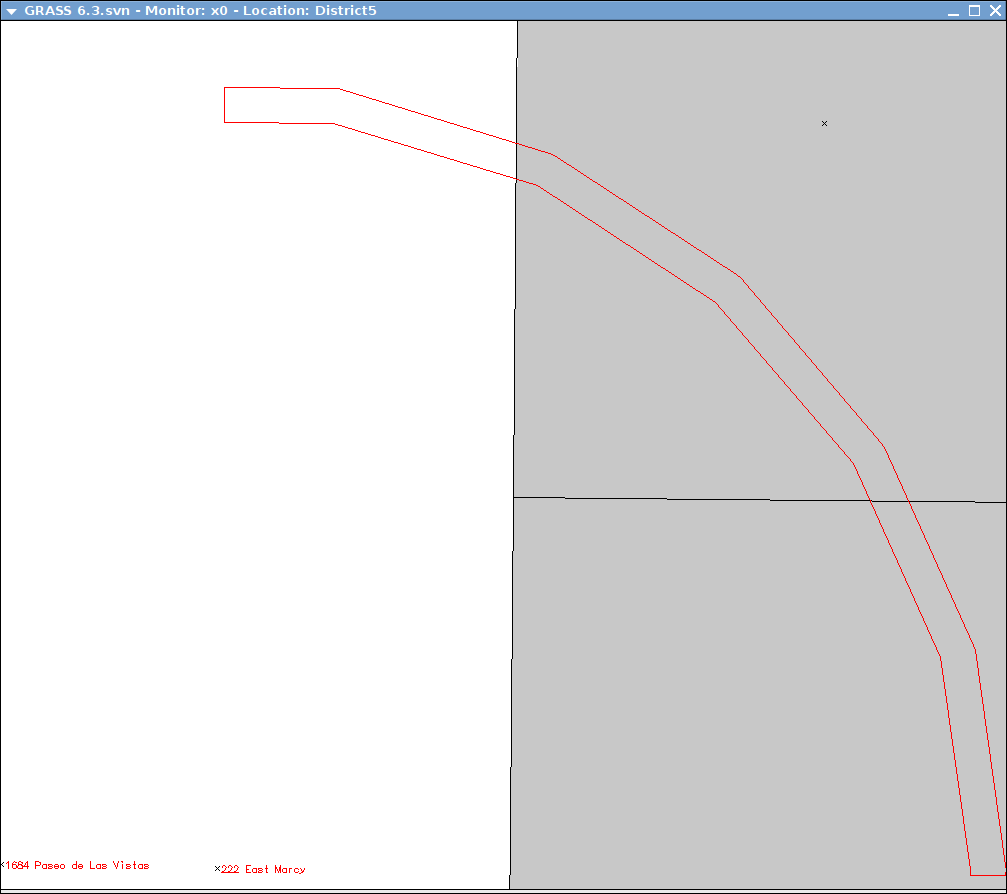
This wedge is the result of a handful of GRASS commands which I have put together in a script to make it easy to do. Basically it boils down to these operations:
Applying the "buffer wedge" operation to the second cell tower data gives the picture below.
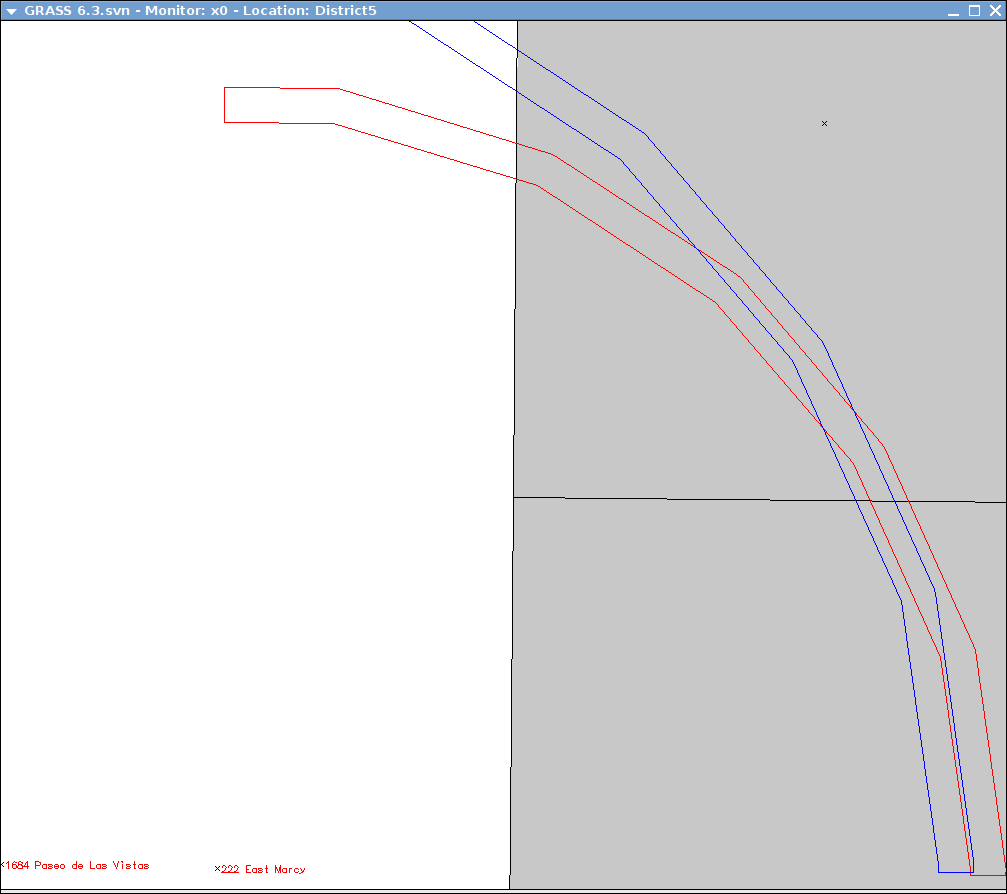
At this point the figure is a little hard to read, so we apply an overlap operator using the GRASS function "v.overlay." The figure below shows in green the area covered by both of the "wedges" of cell phone uncertainty. Using two simple GRASS functions ('v.db.addcol' and 'v.to.db') we can compute the area of the overlap, which turns out to be a bit less than 1.3 square miles.
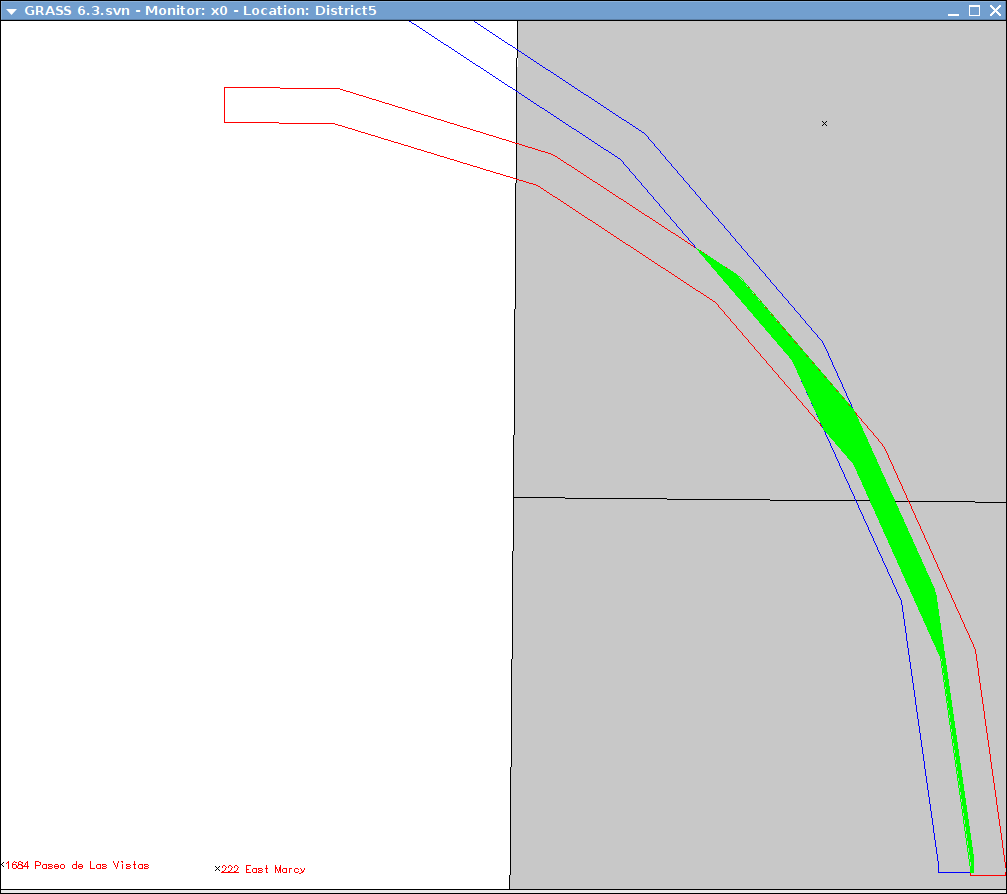
At this point, we don't need the wedges anymore, so I redraw the screen without them, using only the overlap polygon. This time I draw them over the two topo maps, but we're still zoomed out too far to see any real detail.
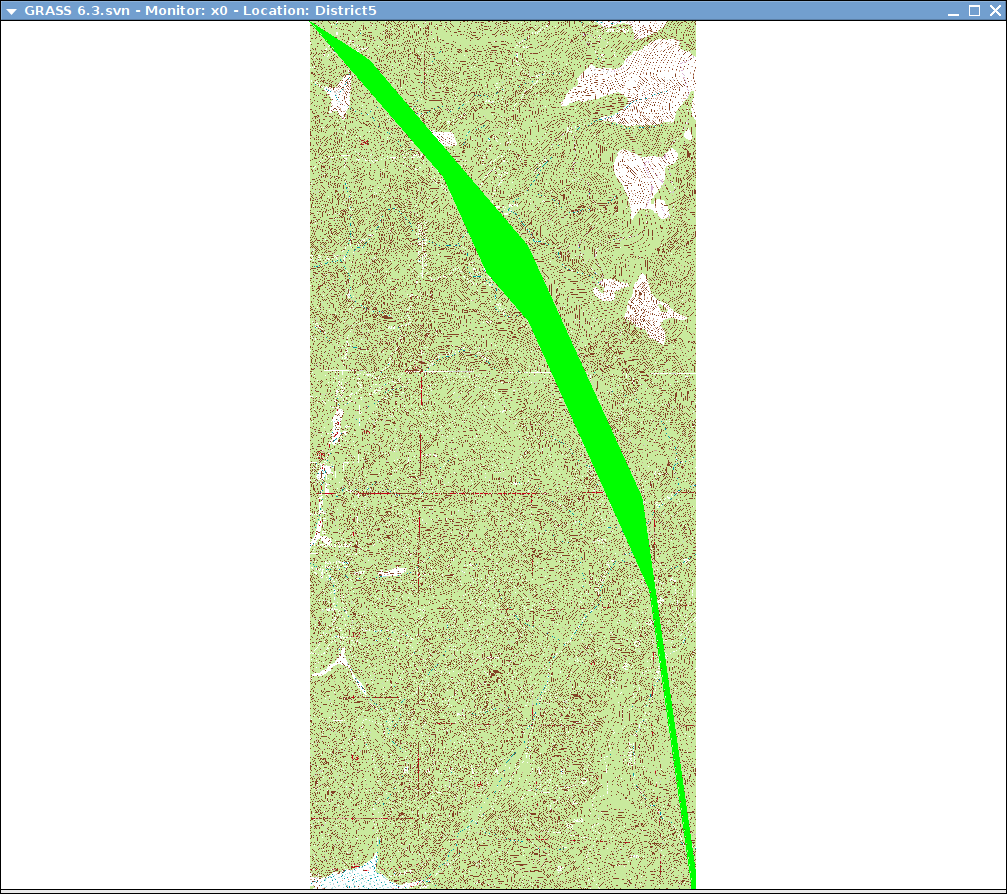
The final piece of the puzzle is the subject's claim that his watch says he's at 11,900 feet. Since the weather has been so variable and he is unlikely to have recalibrated his altimeter after being caught in the storm, let's just say that means his altitude is above 11,000 feet. We can use the GRASS functions "v.to.rast" and "r.mapcalc" to compute all the points in the map that meet all the following criteria:
This turns out to be a very restrictive pair of criteria, the results of which are shown by the magenta area in the figure below:
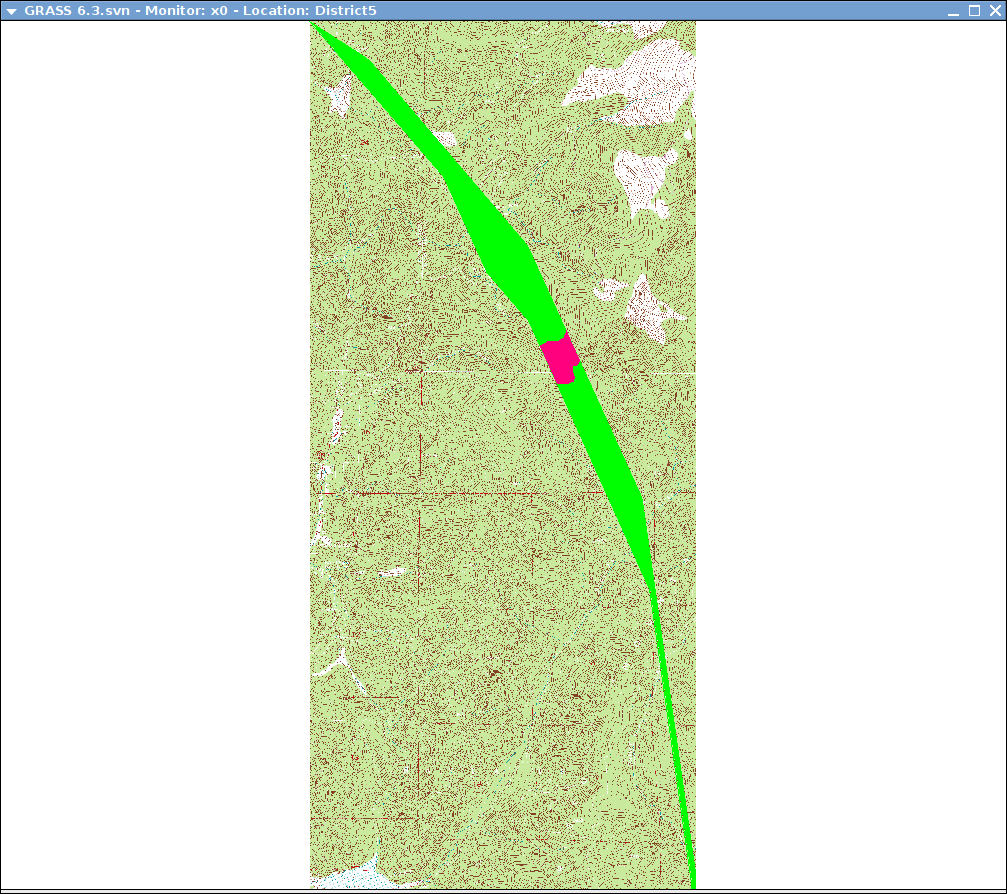
This raster can be turned back into a vector with one command, too, r.to.vect. The result is a search area we can plot on a map as a boundary. We can also use the "v.db.addcol" and "v.to.db" functions again to compute its area, which turns out to be 0.08 square miles.
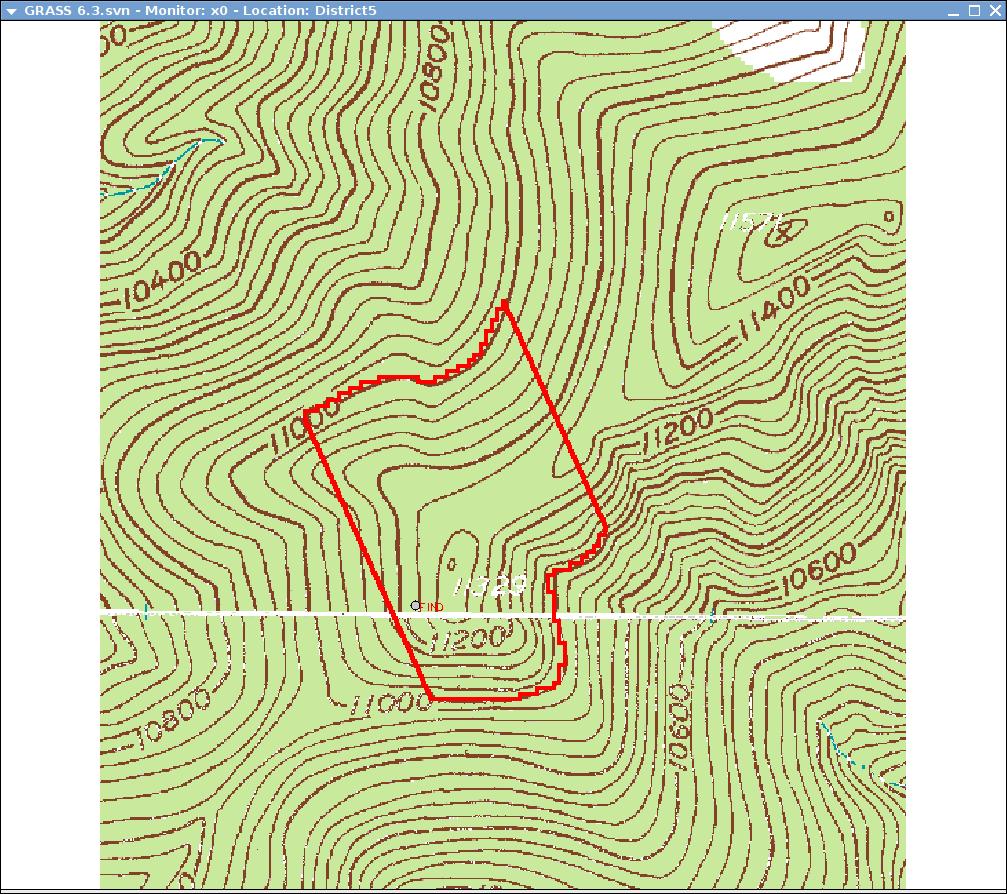
Note that the actual location of the subject is plotted on this final image.
The entire thing can then be packaged up into a PDF map for printing, although making this pretty is more time consuming than it should be. The GRASS function used is ps.map, and one constructs an input file for it such as this one, which produced a postscript file to be converted to this PDF file.
With a little preparation, it is well within the capabilities of a free GIS tool to combine the information available on mission 080103 to construct a reasonable search area that fits it in an operationally reasonable way. The area it pinpoints is small enough to justify tossing a small number of resources there even if "common knowledge" overwhemlingly pushes the search into what is considered more likely areas.
Obviously, using these tools would require that planning section have access to a technical specialist familiar with them. But these tools are freely available and far more powerful than the commercial "mapping programs" that are common in SAR base. I highly recommend that SAR managers cultivate a pool of GIS-savvy volunteers to assist with planning.